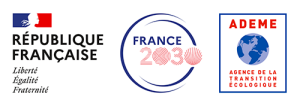For the past three years, Seawards has been working to achieve what many deemed impossible: producing fresh water from the sea, without chemical pollution.
This November marks a decisive milestone. Our cryo-separation prototype is finally leaving the laboratory to join Marseille, at the Saumaty port, as close as possible to the element that inspired its creation.
Entering the real world
This move is far from symbolic. It is the moment when a patiently crafted technology begins to interact with reality.
In Saumaty, salty air, temperature variations and marine humidity become partners in learning.
The prototype is installed the way one sets up a precision instrument: with rigor, with confidence, and with a desire to understand even more.
The verdict: the reliability of a clean process
Testing campaigns conducted since 2022 have confirmed the robustness of the method:
• fresh water produced below 250 ppm,
• stable freezing and separation cycles,
• energy performance in line with sobriety scenarios,
• and above all, no discharge beyond the natural salinity of the marine environment.
Solid results, achieved without triumphalism. Proof is not proclaimed — it is built.
Preparing what comes next: a prototype that learns
At Saumaty, the prototype continues this long-term work: observing, adjusting, repeating.
Every data point collected will inform the design of the industrial demonstrator planned for 2026.
Water innovation is not a sprint — it is a learning curve, and the sea is its measure.
Europe in dialogue
In recent months, technical exchanges with Germany have enriched our thinking. They have offered new perspectives on mechanics, compactness and modularity.
They confirm that Seawards is an open project, shaped by multiple viewpoints: a technology refined through European dialogues, with the ambition to become agile, replicable, and adaptable to island, coastal or industrial contexts.
A presence, at last
This prototype, placed just a few meters from the water, carries a simple conviction: industry can once again become an act of care.
In Marseille, Seawards’ technology has found an honest ground for experimentation.
It is here that the sea begins to answer our questions.
Entering the real world
This move is far from symbolic. It is the moment when a patiently crafted technology begins to interact with reality.
In Saumaty, salty air, temperature variations and marine humidity become partners in learning.
The prototype is installed the way one sets up a precision instrument: with rigor, with confidence, and with a desire to understand even more.
The verdict: the reliability of a clean process
Testing campaigns conducted since 2022 have confirmed the robustness of the method:
• fresh water produced below 250 ppm,
• stable freezing and separation cycles,
• energy performance in line with sobriety scenarios,
• and above all, no discharge beyond the natural salinity of the marine environment.
Solid results, achieved without triumphalism. Proof is not proclaimed – it is built.
Preparing what comes next: a prototype that learns
At Saumaty, the prototype continues this long-term work: observing, adjusting, repeating.
Every data point collected will inform the design of the industrial demonstrator planned for 2026.
Water innovation is not a sprint – it is a learning curve, and the sea is its measure.
Europe in dialogue
In recent months, technical exchanges with Germany have enriched our thinking. They have offered new perspectives on mechanics, compactness and modularity.
They confirm that Seawards is an open project, shaped by multiple viewpoints: a technology refined through European dialogues, with the ambition to become agile, replicable, and adaptable to island, coastal or industrial contexts.
A presence, at last
This prototype, placed just a few meters from the water, carries a simple conviction: industry can once again become an act of care.
In Marseille, Seawards’ technology has found an honest ground for experimentation.
It is here that the sea begins to answer our questions.
